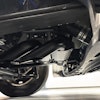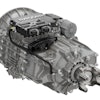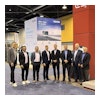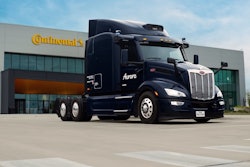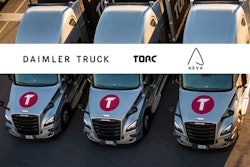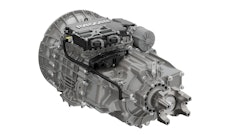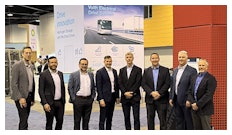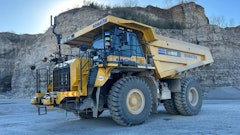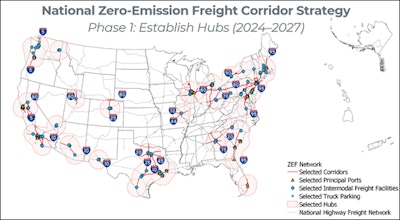
The Biden-Harris administration has released the National Zero-Emission Freight Corridor Strategy. Developed by the Joint Office of Energy and Transportation and U.S. Department of Energy (DOE), in collaboration with the Department of Transportation (DOT) and the Environmental Protection Agency (EPA), the strategy will guide the deployment of zero-emission medium- and heavy-duty vehicle (ZE-MHDV) charging and hydrogen fueling infrastructure from 2024 to 2040. The strategy is designed to meet growing market demands by targeting public investment to amplify private sector momentum, focus utility and regulatory energy planning, align industry activity, and improve air quality in local communities heavily impacted by diesel emissions.
According to the press release:
Providing ubiquitous and convenient access to electric vehicle (EV) charging and hydrogen refueling along the nation’s freight corridors and at intermodal freight facilities and high-usage ports is key to achieving U.S. goals to promote at least 30% ZE-MHDV sales by 2030 and 100% sales by 2040. The goal of the strategy is to align public policy and investments by prioritizing, sequencing and accelerating infrastructure along the National Highway Freight Network (NHFN) in four phases. A core objective of the strategy is to meet freight truck and technology markets where they are today, determine where they are likely to develop next, and set an ambitious pathway that mobilizes actions to achieve decarbonization.
 U.S. Department of Transportation
U.S. Department of Transportation
In alignment with the Joint Office’s National Zero-Emission Freight Corridor Strategy, the Federal Highway Administration is announcing the designation of National EV Freight Corridors along the National Highway Freight Network and other key roadways. The designations, which are required by the Bipartisan Infrastructure Law (BIL), are a critical part of the Biden-Harris administration’s strategy for building out a convenient, reliable and made-in-America national EV charging network that supports individual drivers and commercial needs.
Battery-electric and hydrogen fuel cell vehicle technology along with other zero-emission forms of freight transport have considerable potential to save Americans money on consumer goods thanks to reduced fueling and maintenance costs associated with transport, all while delivering significant health benefits for historically disadvantaged populations that suffer the worst impacts of pollution from freight emissions and helping achieve national climate goals.
“Medium- and heavy-duty trucks in our current freight network contribute approximately 23% of greenhouse gas emissions in the U.S. transportation sector," said Federal Highway Administrator Shailen Bhatt. "These new designations and strategy will help to grow our national EV charging network, encourage clean commerce within the freight community, and support President Biden’s goals of achieving net-zero emissions for the nation by 2050.”
 U.S. Department of Transportation
U.S. Department of Transportation
This is an all-of-government approach to aligning investments and accelerating sustainable and scalable deployment of reliable ZE-MHDV infrastructure. Focusing deployment on areas with substantial freight volume starts deployment in areas with the most opportunity to spark further investment. Deployment factors include corridor segment usage by freight volume, port usage by annual freight tonnage, projected ZE-MHDV volumes, disproportionate environmental and air quality burden from MHDV transportation and non-attainment for criteria air pollutants, states with ZEV deployment-enabling policies, and “on the ground” planning through DOE’s commercial ZEV corridor planning grants.
The National Zero-Emission Freight Corridor Strategy will prioritize, sequence and accelerate infrastructure along key freight corridors and hubs in four phases:
- Establish priority hubs based on freight volumes (2024-2027)
- Connect hubs along critical freight corridors (2027-2030)
- Expand corridor connections initiating network development (2030-2035)
- Achieve national network by linking regional corridors for ubiquitous access (2035-2040)


